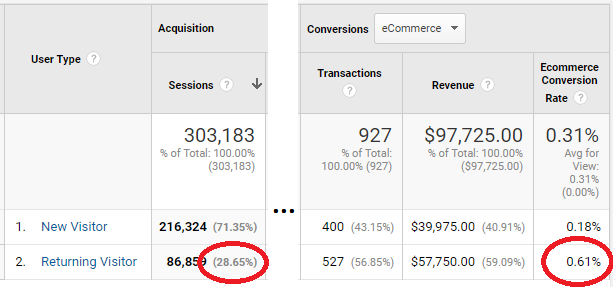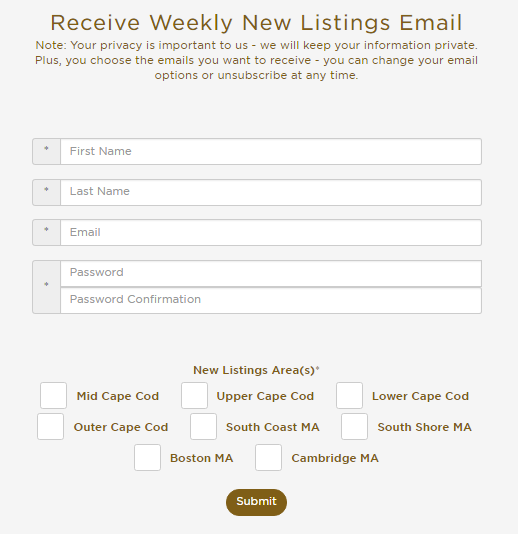Is your website getting a lot of traffic, but not enough leads? Most importantly, aren’t leads converting into actual sales?
If you answered “yes” to the above questions, the problem may be “quality traffic”. Read on to find out how to find out if the traffic to your site is poor, and if so, how to fix it.
How to Know if Your Website’s Traffic Quality Is Poor
Here are some ways to easily identify if your site is getting the traffic it deserves:
Your Bounce Rate Is Higher than the Industry Average
According to Google, “a bounce is a single-page session” and “bounce rate is a one-page session divided by all sessions or the percentage of all sessions on your site where users viewed a single page and they triggered a single request to the Analytics server. In other words, a website visitor is said to jump when they visit a web page but do nothing else.
If the industry average is 60%, but your site’s bounce rate is 80%, it is a sign that the quality of your traffic is low. The following chart provided by Conversion XL shows the bounce rate benchmarks by sector:

To reduce your bounce rate, you will have to analyze what is happening in your Google Analytics or other web analytics tool to find out why people are leaving your site so quickly.
Your Average Website Session Duration Is Less than 2-3 Minutes
According to a Databox survey, about 41% of sites have an average session duration of 2-3 minutes:

Another 55% reported a mean session duration of fewer than 3 minutes and 27% reported more than 4 minutes.
Databox also shows that the best tactic to increase your average session length is to include visual aids, such as relevant videos, graphics, and infographics, on your page to grab visitors’ attention.
Your Percentage of Returning Visitors Is Less than 30%
According to Mike Sullivan, the main contributor to the Google Analytics support forum, the percentage of repeat visitors to your site should be around 30%. Anything below that is below average while having around 50% is considered good.
When you get new visitors to your site, some of them “stick” (come back), so you should always attract new visitors, and Sullivan says that 50% -70% is a good range.
Most sites get more new visitors than regular visitors, but they are the last ones who are more engaged: “they bounce less, see more pages per session and have longer sessions. They also tend to have higher conversion rates and higher sales. “:

How to Improve the Quality of Traffic on Your Website
Now that you know what to look for when determining the quality of your website traffic, here are the top 5 ways to improve the quality of traffic to your website:
Target High-Intent Keywords
Depending on your business goals, you should target high-intention keywords that are commercial in nature.
As WordStream suggests, a search query can be divided into three types: navigational, informational, and transactional:

Of these three types of research, only transactional inquiries have high business intent, resulting in a sale.
PPC ads around keywords with commercial intent can generate a good return on investment. However, the definition of transactional keywords differs from company to company. Keywords with commercial intent can be classified into two categories:
- buy now keywords
- product keywords
The keywords “Buy Now” mean that the user has already decided to buy the product, and some examples of these keywords include:
- Purchase
- Discount (s)
- Deal)
- Coupon (s)
- Free shipping
Unlike potential customers searching for “buy now” keywords, people using “product” keywords may be hesitant to buy the product right away, but they also have a high conversion rate. Some examples of “product” keywords include:
- Brand-name goods
- Specific products
- Product categories
- Affordable
- Best
- Cheapest
- Comparison
- Review
If the main goal of your site is to generate sales, prepare a list of keywords with high commercial intent and rank your site for those keywords in organic and paid search results.
Regularly Monitor Your Traffic Quality Level
Traffic Quality Score is a metric that monitors the overall quality of a website’s traffic. Analysis tools, such as Finteza, allow you to analyze the level of quality of traffic, comparing the type of traffic that your site receives regularly.
After logging in to Finteza, navigate to the Quality tab located on the left sidebar, where you will see a donut chart comparing traffic statistics for a selected period:

The information is grouped by color for easy viewing:
- Green indicates actual traffic
- Red indicates traffic from spam IP addresses
- Yellow indicates VPN traffic and proxy servers.
- Gray indicates traffic from social media and searches engine bots.
The best thing about Finteza is that it will alert you if there is any possibility of an external attack. You will notice a marked increase in the column “Attackers: SSH, brute force, DDoS”, where you will provide the reason for the increase. This usually happens when there is an unexpected increase in traffic to a website. You can then take steps to protect your website from spam traffic.
Send Emails that Speak to Your Customers’ Interests
The highest quality of traffic visits from your existing customers. And there is no better way than email marketing to allow them to visit your website more often. The idea is to send emails that speak to the interests of your customers.
According to the DMA, a targeted campaign can improve revenue by 760%:
The best way to segment your list is to capture data about your visitors in a registration form. Instead of sending a sales email, share tricks with them on how they can their pain points. This will make them read your emails more and take the necessary actions (by following a link) by visiting your website. Keep emails short to spark curiosity in the minds of readers.
Here are the most important things to keep in mind when conducting passion-based email marketing:
Always create a subscription-based email list, because if you start sending emails to people who have not signed up, you will waste your time and as well as your reader’s time.
Segment your contacts according to their interests. The easiest way to do this is to ask users about their interests. Take a look at the email registration form below, submitted by Robert Paul Properties, where people can choose the type of listing they would like to receive and never receive an email that is not relevant to them:

Gamify your emails for readers who take too long to act. Yes, there are people who like to visit your site and would like to take action, but they never seem to get there. For these users, a gentle nudge is needed and gamification is an amazing way to do it. Take a look at the “Bestseller Bingo” email that Penguin Random House sends to its subscribers:

Leverage the Power of Retargeting
According to Retargeter, only 2% of the traffic converts on the first visit. This means you have to keep track of leads to convert them.
Retargeting is a great way to connect with leads who are already in the middle stage of the sales funnel. Most companies make the mistake of spending a lot on content marketing, email marketing, PPC ads, and SEO, but they never take remarketing seriously. Remarketing is the best way to acquire quality traffic.
No matter what channel you are using to drive traffic to your website, always invest in retargeting, because it is a sure way to attract interested visitors back to your website:

Depending on the likelihood of conversion of visitors, they can be divided into three phases: cold traffic, moderate heat, and intense heat.
Cold Traffic: People who never engaged with your content before visiting your site are classified as cold traffic. Although it is very difficult to convert them at this stage, you can use their email addresses for remarketing through Google Ads.
Warm Traffic: People who have shown interest in your product, but are still looking for products or services to find solutions to their problems, are classified as hot traffic. You can use the carousel ad format to display the product that was clicked on your site for redirection.
Hot Traffic: People who are actively looking to buy the product and are making a final decision are considered active traffic.
Improve Your Ad Quality Score
Google measures the quality of your ad, keywords, and landing pages. The higher the Quality Score of your ad, the better it will perform. It also means that it will result in cheaper clicks.
Your ad quality score depends on factors such as click-through rates (CTR), the relevance of each keyword, and the quality of the landing page. The past performance of your Google Ads campaign can also affect the quality score of your ad.
Ads with a good quality score rank higher (without increasing your bid), and if your PPC ads meet customer needs, your ad score will increase:

You can achieve a higher ad quality score by improving your ad text, optimizing your landing pages, and removing negative keywords.
Continually search for relevant keywords and break them down into individual campaigns and ad groups.
In general, the higher your Quality Score, the lower your cost per conversion (CPC). As WordStream says, a high-quality score is how Google says your PPC ad meets the needs of your potential customers:

The higher your ad ranks, the higher your traffic. PPC campaigns are expensive, especially if you don’t have a good quality score. Focus on keywords to optimize your ad.
Final Thoughts
It is not the number of visitors you get to your site, but the amount of high-quality traffic your site receives. Choose the font that brings you closer to your business goals. Understanding what your customers want and optimizing your strategy accordingly can help you drive high-quality traffic to your website.


